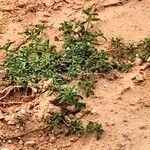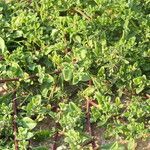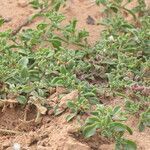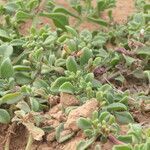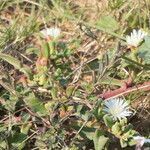Prostrate or ascending annual or biennial, up to 0.4 m high, internodes terete. Leaves succulent, flat, ovate to lanceolate-spathulate, glassy bladder cells on leaf surface, margins may turn red. Flowers white or pale yellow, sometimes tinged pink at apex. Flowering time Sept.-Jan. Capsules pale golden-brown, 4-or 5-locular, valve wings indexed over valves.
A herb or low shrub. The stems can be erect or trailing. The stems and branches are angular. The stems are tinged with red. The leaves are opposite or alternate on the branches. The leaves are oval or spoon shaped. They are 1-4 cm long and 0.5-3 cm wide.
Basal leaves not forming a rosette. Prostrate or ascending annual. Leaves flat, ovate-to lanceolate-spathulate, bladder cells distinct. Flowers white or pinkish, 5-20 mm diam. Fruits with valve wings reflexed and fused in pairs.
